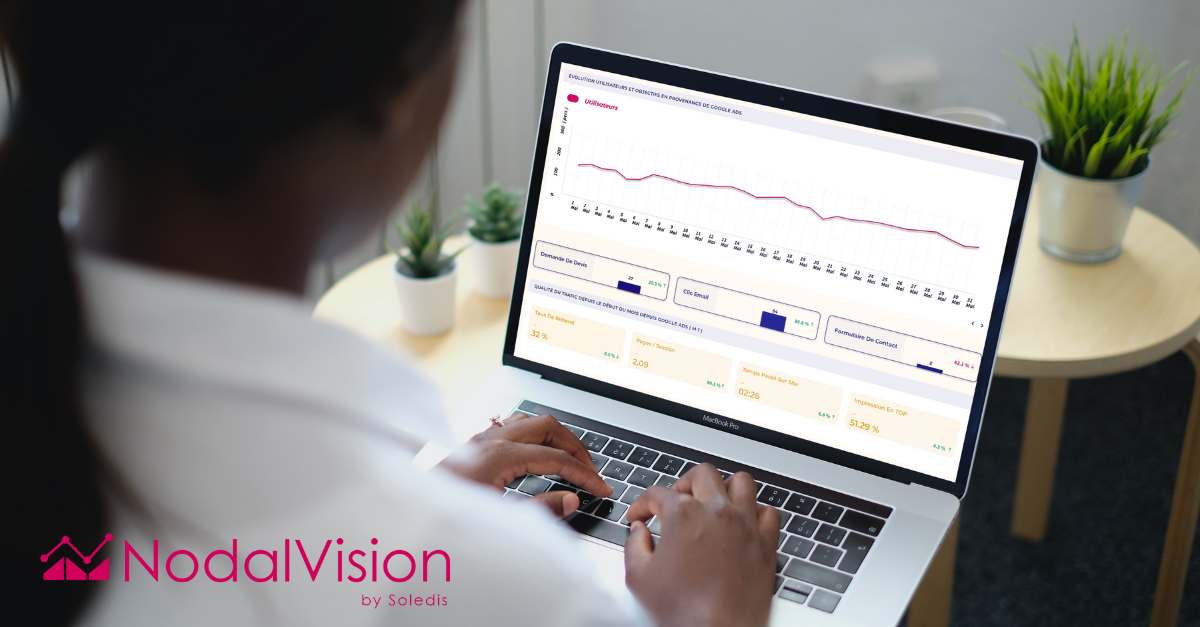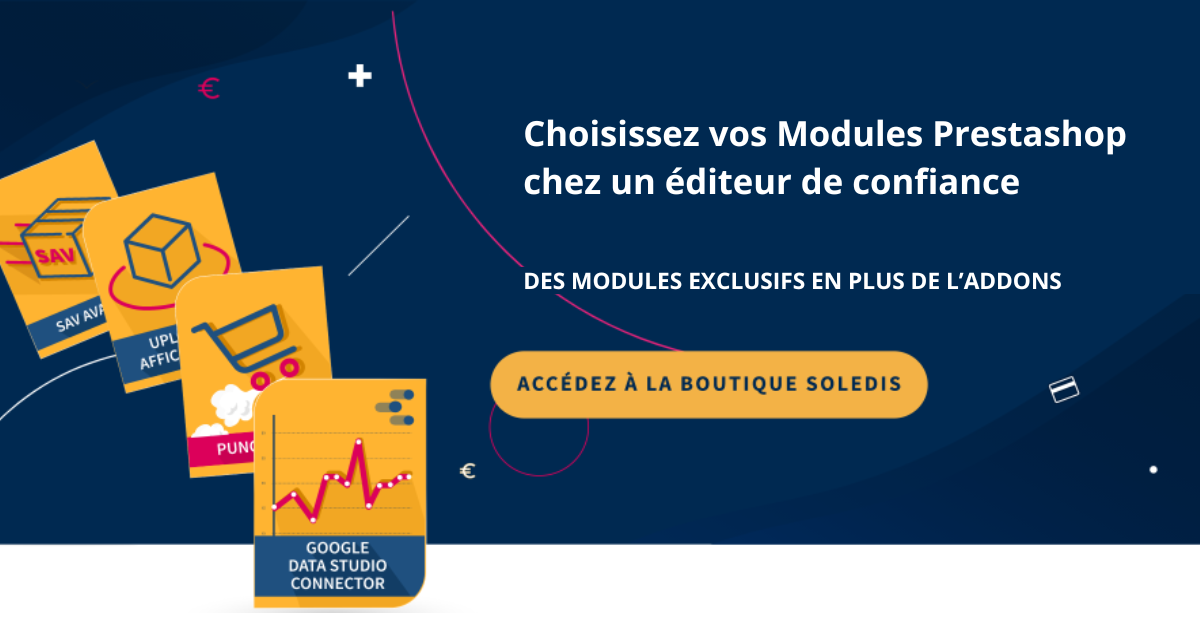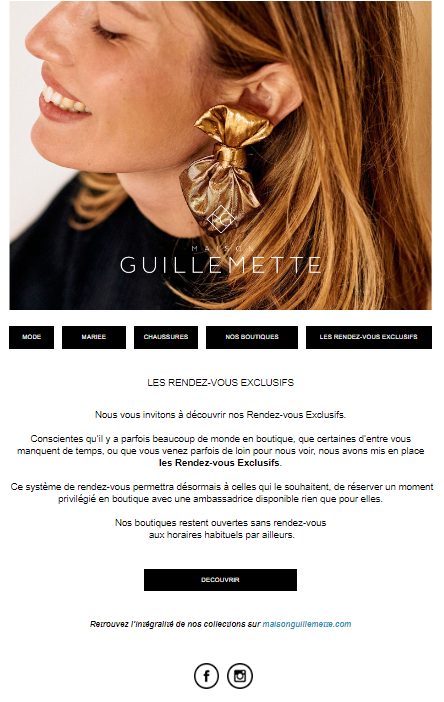The start of the school year in September is often an important turning point between taking stock of the past months, launching the last quarter and preparing for the coming year. If you have an online sales site, here is some advice from the e-commerce agency Soledis to get you off on the right foot after the holidays!
1) Take stock of your e-commerce activity in figures
The sales have been over since the beginning of August and depending on your sector of activity, your sales have either accelerated or slowed down during the month of August.
- Is your turnover higher or lower than last year?
- Where do you stand in relation to your annual objectives?
- Do you need to replenish your stocks?
- Which products have sold particularly well?
- Have there been any delivery or after-sales service issues recently?
It might be worth taking stock with your team or your e-commerce agency partner before tackling the last quarter.
It’s also an opportunity to ask yourself how often you take a numerical stock of your business and how much time you spend doing it?
Among the clients of the ecommerce agency Soledis, some e-merchants do this daily, for the simple reason that it only takes them 5 minutes!
All their data is collected on Looker Studio (formerly Google Data Studio, Google’s data visualization tool) regardless of its source: Prestashop, Shopify, their ERP, Google Analytics, etc. Looker Studio allows you to gather this data in synthetic dashboards that are accessible to everyone. Sorting and filtering functions allow you to analyze this information quickly and easily.
“`
2) Study your acquisition
Still on Looker Studio, or on your data visualization tool, don’t forget to take stock of your web marketing campaigns.
How is traffic on your website evolving? How is your conversion rate progressing? And your average shopping cart?
That’s enough to spend another 5 minutes on your dashboards!
But nobody is timing you! The important thing is to use this information to make the right decisions.
So focus on the essentials: where do your buyers come from? How did they find you?
But nobody is timing you! The important thing is to use this information to make the right decisions.
So focus on the essentials: where do your buyers come from? How did they find out about you? What is your most effective online visibility channel: natural referencing (SEO), paid referencing (SEA), marketplaces…?
3) Optimize your Marketing Automation and improve customer recurrence
Withthe ShopiMind interface, your marketing automation assessment is simple to do.
Here are some tips to optimize your scenarios:
- Be pragmatic: if scenarios don’t work, there’s no point in keeping them! They waste your time and money.
- On the other hand, scenarios that don’t work quite to your liking deserve your full attention: you need to work on them to improve their performance.
- Don’t be too quick to dismiss successful scenarios. Take the time to analyze them in detail: they will help you improve the previous ones.
To improve customer loyalty, consider setting up newsletter or SMS campaigns: new products, promotions, etc.
ShopiMind’s Newsletter and Bulk SMS features are ideal for this, and Soledis is there to help you set them up or optimize them.
4) Clean up your customer contact database and your ad campaigns
To improve the profitability of your marketing automation, you should also spend some time (ideally every quarter) on your customer file.
- Delete duplicates and incorrect email addresses;
- Put inactive contacts in a particular segment to reactivate them later or in a different way;
- And finally, launch your quarterly campaigns such as those asking your contacts to update their preferences and contact details.
Don’t forget that on ShopiMind, you can automate these tasks to save time!
With the same idea of a big clean-up, take a look at your Ads campaigns: are they performing well, do the budgets need to be adjusted, which keywords are polluting your ROI?
Need support with SEO, SEA, mailing, data visualization, website improvement?
5) Monitor your competitors and your market
Competitive intelligence is always the task that gets put off until tomorrow. However, it allows you to take a step back from your own actions and be inspired by new ideas: that’s exactly what we want for this back-to-school season!
- Select a maximum of 4 to 5 competitors
- Make a list of what you want to compare: homepage zoning, product catalog, tree structure, shopping tunnel, blog, Google page, social networks (including those you are not on), etc.
- Don’t forget to sign up for their newsletter if you haven’t already.
- Also read their customer reviews or the description of their company on their job offers, it is often very informative
- Finally, look at their SEO positioning (on Semrush or directly on Google) on the list of keywords that interest you.
- In a table, note only what interests you: the KPIs that you can compare with your own (new products, number of posts, promotions, number of subscribers, SEO positioning, etc.), ideas that seem interesting to you, keywords that appeal to you.
6) Prepare your next marketing operations: Black Friday and Christmas always come too quickly!
After the review, and thanks to all the conclusions of these analyses, you can now adjust your overall action plan and put all your good resolutions into the preparation of upcoming campaigns: Black Friday and Christmas (or Green Monday, Cyber Monday, Halloween, Father’s Day, New Year’s Eve… it all depends on your positioning)!
Like every year, you need to select the products to be promoted and prepare your communication plan: which tools, for which target audience, with which message and which budget? Then get down to the operational side of things by creating your visuals and content.
But if you have taken the time to review your first nine months, you will be able to go even further!
Perhaps your monitoring will have revealed that the redesign of your homepage is essential or that it is urgent to review the tone of your emailings… It’s time to shake things up!
Think about the modules that can bring real added value to your site without changing everything.
Testing things on a small scale over the next few months and during your next peaks of activity will allow you to prepare your web visibility strategy for 2024.
 7) Plan your web marketing strategy for 2024
7) Plan your web marketing strategy for 2024
If September is a busy month for everyone, it’s also because it’s time to start thinking about 2024.
UX, front office and back office features, hosting, budget and return on investment in SEO or online advertising, community management… Take a look at your levers for action to further improve your online sales.
Don‘t just focus on your website, think about marketplaces, BtoB or institutional targets, etc. Also look at your internal operations: product data entry, logistics, customer relations.
If you formulate the outlines of your annual strategy as early as September, you will have a few months left to test things, find partners, prioritize your ideas and focus on specific points that will serve as final adjustments.
This pivotal period of maturation of your strategy is an important (and exciting) time to consider changing e-commerce agencies or improving your web marketing strategy.
It is the time to consult agencies to integrate their estimate into the 2024 budget!

In short, take advantage of the start of the new school year in September to take stock, make the best decisions for the last quarter and look ahead to 2024. It’s the end of the third quarter, you have enough data to make strong choices and boost your sales by the end of the year!
Related Articles
Whether you are an overwhelmed e-merchant or an overworked E-commerce/Marketing […]
The start of the school year in September is often […]
More often used to promote sales, the newsletter can nevertheless […]


 7) Plan your web marketing strategy for 2024
7) Plan your web marketing strategy for 2024


